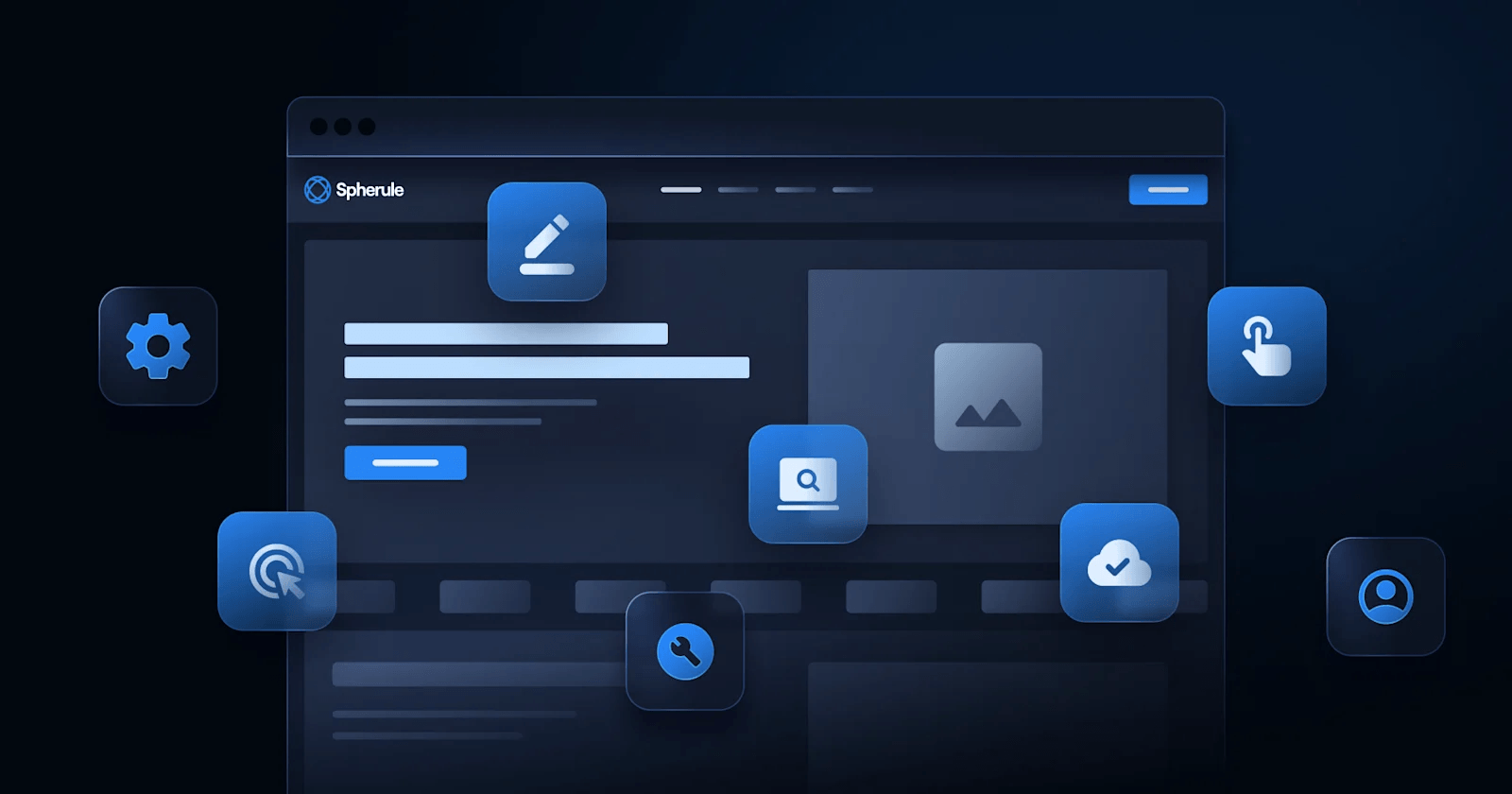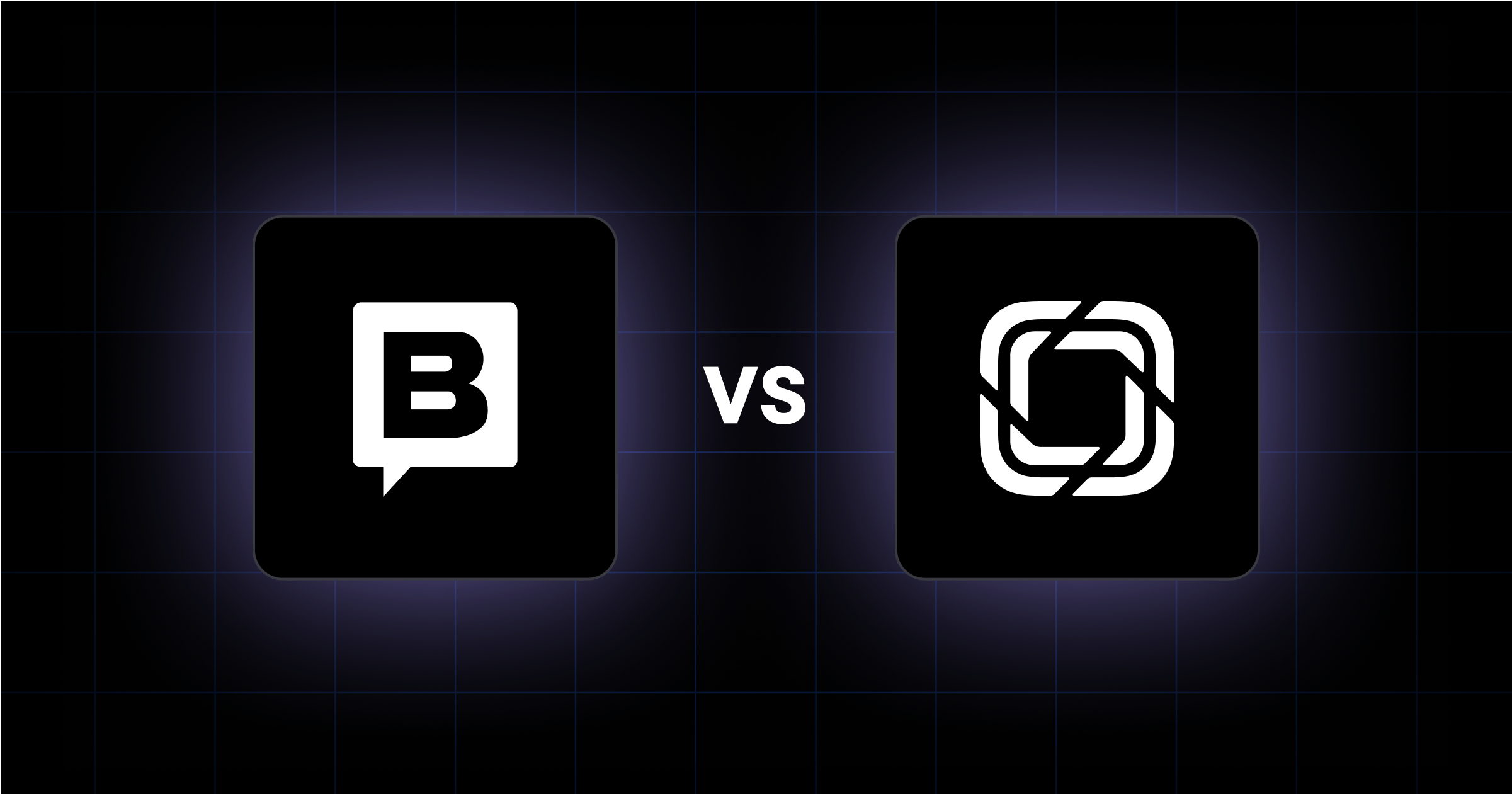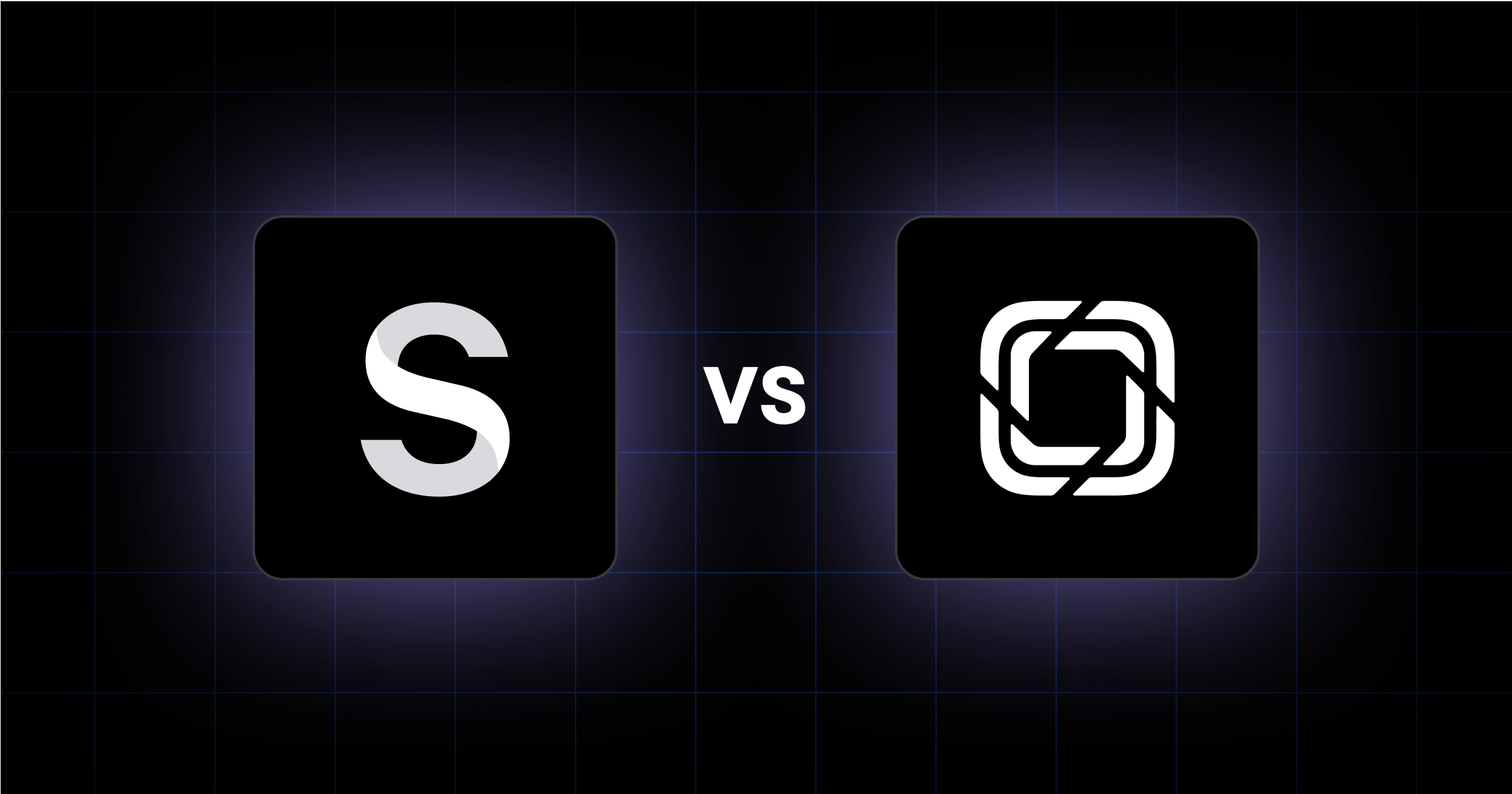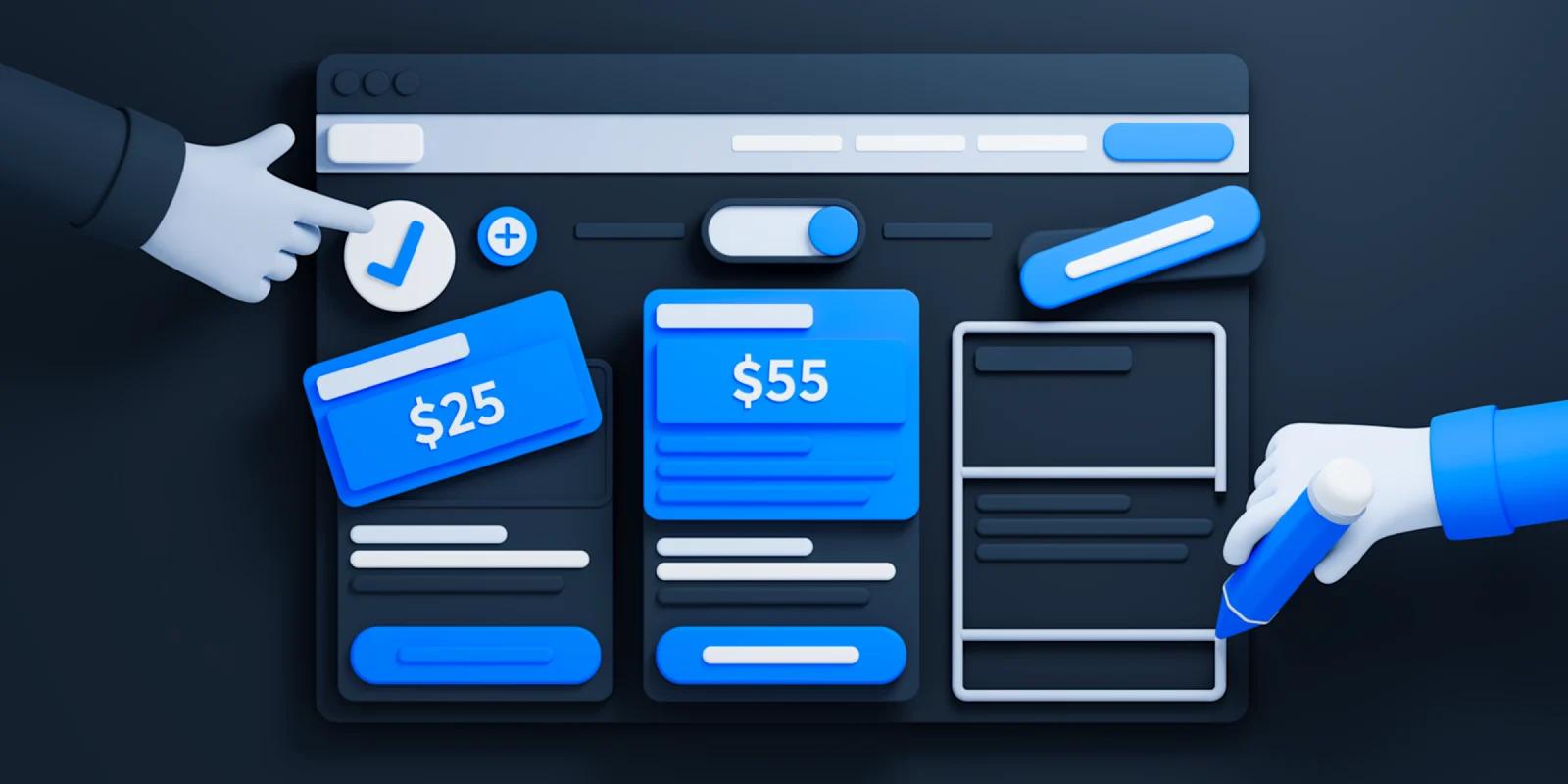Embarking on a website redesign is a significant turning point in your organization's digital marketing strategy. Such projects, often grand in scale, demand a substantial commitment in terms of time, financial resources, and manpower. Whether your redesign is sparked by a rebranding effort or a dire need to transition to a new tech stack, you need a well-thought-out action plan.
Before diving into a redesign, it’s crucial to consider various factors that are instrumental in shaping its success. This includes understanding your current website's strengths and limitations, clearly defining the goals of the redesign, setting a realistic budget that aligns with your business objectives, and determining the right mix of skills and resources needed. Whether it’s improving user experience, enhancing your brand's online presence, or adapting to the latest technological advancements, each aspect of the redesign must be tactically planned before any tasks are put into motion.
In this blog we present 10 tips you should consider before launching a redesign project, ensuring that your investment yields effective, long-term benefits for the organization.
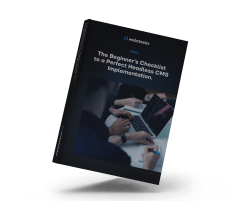

Tip #1. Identify Business Objectives
Any serious considerations for a redesign should stem from clear business objectives. First, establish what your organization is looking to accomplish- citing both business-centric and marketing-specific goals.
Some examples of objectives that may qualify your organization for a website redesign could be related to:
- Creating a more consistent, professional, or distinct brand identity
- Implementing a more compelling, intuitive, and modern website experience
- Scaling content marketing and product marketing efforts
- Strengthening customer relationships or fostering community engagement
- Improving key website metrics such as page views, conversions, or engagement
Remember, goals should be SMART: Specific, Measurable, Achievable, Relevant, and Time-bound. This framework turns vague aspirations into actionable objectives.

Tip #2. Audit Your Current Website
Identify your most prominent problems with your current website, whether that be the branding, UX, content, or tech stack. Also find out what aspects of your website are most successful, and how they could be further enhanced by a redesign. Make sure that all website stakeholders have an opportunity to share their feedback on the current marketing site. This audit should include how the new website should be presented externally, but also how it should function internally for the marketing team.
Here are just a few questions you should pose while critiquing and benchmarking your current website:
Design
- What do you want to change about your brand identity?
- What do you dislike about the current website’s design?
- Is your website responsive? How does the website look on smaller screens?
Content
- Is the copywriting compelling and speaking in your brand’s desired tone of voice?
- Is the website missing any pages that should be included in the redesign?
- Is your content optimized for SEO? Are there technical issues that need to be addressed?
Analytics
- What are your most valuable pages? What pages get the most views, engagement, and conversions?
- How do users navigate through our site? Are there disconnects that lead to high bounce rates?
- What are your current organic search rankings? What pages would you most like to see increase?
Tech Stack
- How is your website fast and secure? How does it score on Google’s PageSpeed Insights?
- Are content editors enjoying the content editing experience? Are there any issues with your content management system?
- How scalable are the current website technologies? Are you considering upgrading to a more performant front-end or CMS?

Tip #3. Set a Budget
From emerging startups to established enterprises, setting a realistic budget is crucial. The scope of your redesign - be it a simple brand refresh or a full-scale overhaul - significantly influences the budget. Here are some things to consider depending on your organization’s size and budget:
For Startups and Small Businesses:
If you're a newer smaller business, remember that a website is an investment, not just an expense. You are investing in building brand equity and buying into things that should have clear positive effects on KPIs. Depending on your budget and the state of your current site, you’ll need to find the right balance between your aspirations and what’s practical. Opt for a phased approach if necessary, focusing first on updating key content like the homepage, about page, and contact page.
For Medium-Sized Enterprises:
Mid-sized businesses often face the challenge of needing to scale up their digital presence without the resources of larger corporations. Here, the focus should be on smart investments that bring long-term value. This is most important in relation to the tech stack. If your marketing team is constrained by the limitations of your front-end or CMS, it’s best to future-proof now, rather than having to deal with a substantial overhaul down the road.
For Large Enterprises:
For larger organizations, a website redesign can be a complex, multi-faceted project. Here, budgeting needs to account for comprehensive changes from branding to technology. Investing in a state-of-the-art tech stack, a robust design system, and integrations with other business systems can be crucial. However, it's important to allocate funds wisely, ensuring every dollar contributes to measurable improvements in performance, user experience, and business outcomes.


Tip #4. Identify the Right Resources
For a B2B website redesign, identifying the right mix of talent and expertise is as crucial as the redesign itself. Whether you choose an agency, contractors, or in-house employees, each option has its own set of advantages and challenges. Here’s a breakdown:
Hiring an Agency
Pros:
- Expertise and Experience: Agencies often bring a wealth of knowledge and a diverse skill set, having worked on numerous projects typically within the same industry.
- Resource Availability: They have dedicated teams for design, development, and SEO, ensuring all aspects of your redesign are professionally handled.
- Scalability: Agencies can easily scale their services up or down based on your project's needs.
- Innovative Solutions: Exposure to a variety of projects allows agencies to offer innovative, proven solutions.
Cons:
- Cost: Generally, hiring an agency can be more expensive than using in-house resources.
- Less Control: You may have less direct control over every detail of the project.
- Communication: Sometimes, coordinating with an external team can lead to communication challenges.
Engaging Contractors
Pros:
- Flexibility: Contractors can be hired for specific tasks, offering flexibility in managing your project resources.
- Specialized Skills: You can find contractors with niche skills tailored to specific aspects of your redesign.
- Cost-Effective for Short-Term Needs: Often more budget-friendly for short-term or one-off tasks.
Cons:
- Cost: Generally, hiring an agency can be more expensive than using in-house resources.
- Less Control: You may have less direct control over every detail of the project.
- Communication: Sometimes, coordinating with an external team can lead to communication challenges.
Utilizing In-House Employees
Pros:
- Deep Understanding of Your Brand: In-house teams are closely aligned with your company’s ethos and understand the brand inside out.
- Greater Control: You have more direct control and oversight of the redesign process.
- Long-Term Investment: Builds internal capabilities for future maintenance and updates.
Cons:
- Higher Expenses: Companies who are on a struct budget can find it strenuous to maintain pay rolls.
- Limited Skills and Resources: Your in-house team may not have all the necessary skills for a complex redesign.
- Resource Allocation: Redesign projects can distract from other business-critical tasks.
Choosing the right resources depends on your project's scope, budget, and specific needs. It’s often beneficial to combine these options, such as using an agency for the overall strategy and design, contractors for specific tasks, and your in-house team for ongoing maintenance and updates.

Tip #5. Choose Your Tech Stack
Selecting the right technology stack is a pivotal decision in your B2B website redesign, especially when it comes to the Content Management System (CMS) and the front-end framework. These choices will not only impact the website's performance and user experience but also its scalability and ease of management.
Here’s a brief overview of the key components to a B2B website’s tech stack:
Content Management System (CMS)
Headless CMS: A headless CMS allows you to separate the content management from the presentation layer, making it easier to deliver content across multiple platforms. It is ideal for businesses looking for flexibility and customization.
- Pro: Enhanced security, scalability, and content flexibility.
- Con: Can require more development resources and technical expertise.
Traditional CMS: Platforms like WordPress or Drupal are great for simple websites needing an all-in-one solution.
- Pro: User-friendly interfaces, a wide range of plugins, and strong community support.
- Con: Can be less flexible and slower compared to headless solutions.
Front-End Framework
React.js: A popular choice for interactive and dynamic websites. It's known for its efficiency and flexibility.
- Pro: Great for rich user interfaces and single-page applications. Offers a robust ecosystem.
- Con: Requires skilled developers familiar with JavaScript.
Angular: Best suited for enterprise-level applications. Known for its scalability and maintainability.
- Pro: Comprehensive solution with a lot of out-of-the-box functionalities.
- Con: Steeper learning curve and can be overkill for simpler sites.
Considerations for Choosing Tech Stack
- Scalability: Can the tech stack grow and adapt as your business evolves?
- Security: Is the technology known for robust security measures?
- Community and Support: Does the tech stack have a strong community and support resources?
- Cost: How much can you put aside to meet your current business goals and future growth plans?

Tip #6. Understand Your Audience
Another process that shouldn’t be overlooked is understanding who your audience is, what they need, and how they interact with your website. This knowledge isn't just a guiding star for your redesign; it's the blueprint that ensures your new site resonates with the very people you aim to engage.
There are a few key methods of gathering insights on your website visitors:
Conduct Audience Research
- Surveys and Feedback: Leverage surveys or feedback forms on your current site to gather direct insights from your audience.
- Client Interviews: Engage with existing clients to understand their pain points and what they value in your website.
- Market Analysis: Research industry trends and competitor websites to see how they cater to similar audiences.
Create Buyer Personas
Demographics and Firmographics: Include job roles, industries, company size, and geographical locations.
Behavioral Insights: Understand their online behaviors, challenges, and what solutions they are seeking.
Decision-Making Process: Identify what factors influence their decisions, especially in a B2B context.
Analyze Website Data
User Behavior Analytics: Tools like Google Analytics can provide valuable insights into how visitors interact with your current site.
Heatmaps and User Journeys: Use heatmaps to understand which areas of your site attract the most attention and map out the common user journeys.

Tip #7. Establish Brand Guidelines
Identify your branding to determine how various elements of your visual identity will evolve with the redesign. This will also ensure any new and existing branding harmonizes with the new website colors and style.
Research and Define Your New Brand
Going into a redesign, you should have an idea of what brand elements are being revamped (such as your logo, colors, and other unique branding). It’s not required to know exactly what they will look like - but you should have an idea of what needs to be changed
Here are a few things things to give you a general sense of direction when considering a rebrand:
Market Positioning: Consider your position in the market and how you want to be perceived. Your branding should reflect this positioning distinctly.
Target Audience Preferences: Your brand should resonate with your audience. Research their preferences to inform your branding decisions.
Logo and Color Scheme: Decide if these core elements will be updated. A logo change can signify a new era for your brand, while an updated color scheme can refresh your overall look.
Typography and Imagery: Evaluate if your current typography and imagery align with your brand's message. Changes here can have a subtle yet profound impact on brand perception.

Tip #8. Identify Net-New Content
While planning the scope of your redesign, you may need to consider adding new content to the website that belongs in your navigation. Examples could include pages specifically for showcasing your products’ solutions, the industries you serve, or your partners.
Here are a few ways to come up with new content for a redesign:
- Evaluate Business Objectives: Do your current pages match your goals?
- Assess Content Gaps: Are there areas where your content is lacking that are highly relevant to your products or your audience?
- Competitor Analysis: What are your competitors' websites covering that you are missing?
- User Feedback: What additional information do users and customers seek from your website that would aid the decision-making process?
- Conduct Keyword Research: Do opportunities for new content that could drive substantial organic traffic exist?
Identifying new pages is not just about adding more content; it’s about enhancing the value your website offers to users and supporting your business’s growth.

Tip #9. Map New Site Architecture
Mapping the site architecture in a B2B website redesign involves creating a structure that is intuitive for users and optimized for search engines. Start with a hierarchical layout, placing the homepage at the top, followed by main categories and subcategories. This structure should reflect your content's importance and its relationship to user needs, facilitating an easy and logical navigation path.
Integrate SEO strategies by aligning your site's structure with target keywords, ensuring key content is easily accessible. Pay attention to technical aspects like page loading speed and mobile responsiveness, as they impact both user experience and search engine rankings.
Remember, your site should be scalable to accommodate future growth and expansions. Effective site architecture isn't just about the present layout; it’s about planning for future needs, and making sure your site evolves alongside your business.

Tip #10. Set Timelines
Our last tip is to set realistic timelines for your B2B website redesign. The key is balancing speed with quality, ensuring that every phase of the redesign gets the attention it deserves while staying on track.
If you have never done a redesign before, be extra mindful of these factors:
Break Down the Project: Segment your redesign into manageable phases like planning, design, development, testing, and launch. Assign a reasonable duration to each phase based on the complexity and resources required.
Involve Key Stakeholders: Collaborate with everyone involved, from your internal team to external agencies, to set achievable deadlines. Their input is vital for understanding the time needed for each task.
Ensure Alignment: Get every stakeholder on the same page for the business objectives and scope of work. You will also need to ensure that the designers, developers, marketers, and others working on the redesign are aligned on tasks throughout the project.
Account for Feedback and Revisions: Build in time for reviewing and refining at various stages. Feedback is crucial, but it can also extend timelines.
Set Milestones: Establish clear milestones for major deliverables. This helps in tracking progress and identifying potential delays early.
Include Buffer Time: Always include buffer time for unforeseen challenges. Redesign projects often encounter unexpected hurdles, and having a cushion can prevent a complete derailment of your timeline.
Parting Thoughts
These ten tips will better prepare your team when ready to take on a full website redesign. If you're looking for some design inspiration, check out our Best B2B SaaS Websites eBook.


